In search of flavor, a handful of driven farmers, scientists, millers, and academics have worked hard to bring back the grandfather of Southern grains: Carolina Gold Rice
Originally published in the October 2012 issue.
It’s odd to think that for most of the twentieth century, the most important ingredient of Lowcountry cooking—rice—was not grown in the region (a stark contrast to 1850 when 90 percent of all rice produced in the United States came from South Carolina and Georgia). By World War I, commercial rice growing in the South had ceased, a victim of cheap white rice grown in the Southwest and high production costs in the South. A few families, unwilling to surrender the foodways they knew and loved, kept Carolina Gold growing in parts of South Carolina and Georgia until the 1950s, but the old seed discipline evaporated, weedy red rice polluted the private patches, and finally growing ceased.
Generations of cooks attempting to replicate Samuel Faber’s Pilau from the popular Charleston Receipts (first published in 1950) would never experience the traditional flavor of the original dish. The long-grained white rice available in grocery stores did not taste or handle like the rich, nutty golden rice for which the famous Lowcountry pilaus, bogs, perloo’, and rice gruels were created.
It was the memory of these traditional rice dishes that prompted a sandy-haired Californian named Glenn Roberts to start searching for the lost golden grain. Roberts had grown up eating Geechee cast iron skillet cooking prepared by his Lowcountry mother who had grown up on Edisto Island and in Aiken then worked in Charleston as a chef and hospitality space designer. In 1996, Glenn Roberts left a career in hotel design to start Anson Mills, at first living out of his car.
Bring the gold standard into your kitchen: Shop Carolina Gold Rice on the Local Palate Marketplace.
He purchased a bootlegger’s field of white gourdseed corn, one of the finest of the old Southern dent corns, and began his career as the collector, defender, promoter, and grower of the world’s great landrace grains. (“Landrace” means ancient, natural, and genetically diverse not selectively bred or cross-bred or genetically modified).
Southern Cooking’s Key Ingredient: Carolina Gold Rice
When putting on a dinner in Savannah, he was disappointed in the flavor of the red rice dish. Modern rice just didn’t crisp like the old rices did, and the red rice dish was crying out for what he describes as “that al dente French fry kind of crisp on the outside.” He realized that the culprit was the poor taste and poor texture of the modern rice used in the dish. The missing ingredient had to be Carolina Gold. He was happy to learn that one of his friends right across the river was growing it.
That someone was Dr. Richard Schulze, an ophthalmologist whose 400-acre Turnbridge Plantation skirts the Savannah River. Schulze was the first to bring the storied plant back to the South. His motives were two-fold. Schulze was an avid sportsman who had kept his rice fields alive primarily for hunting (in fact, many of the South’s rice fields would no longer exist were they not planted with modern hybrid rice seed to attract ducks). Schulze had wondered about the rhapsodies in old chronicles of Lowcountry hunting over the taste of rice-fed ducks, and he knew that the rice that inspired the rhapsodies was not New Bonnet, but Carolina Gold.
His search led him to a germplasm bank in Texas in the mid-1980s, where Dr. Charles Bollich worked with him to track down the last remaining samples of the Carolina Gold seed (including some from an Idaho seed bank). It took two years for Dr. Bollich to amass what equated to barely a handful of the old seeds, but that was enough to get a crop going back in Savannah. Schulze wasn’t in it for the money—he donated most of his crop to his church for auction at fundraisers and did not retail the rice. But he spared some seed for Glenn Roberts to start experimenting with his own crops. And some of the rice got into the hands of Savannah and Charleston chefs and foodies, stimulating a demand for Carolina Gold.
One who tasted Dr. Schulze’s rice was John Martin Taylor, a cookbook author who penned the 1992 classic Hoppin’ John’s Lowcountry Cooking (the twentieth-anniversary edition is due out momentarily from University of North Carolina Press). Taylor, who grew up casting shrimp nets off Hilton Head Island, compiled recipes for such classic Lowcountry foodways as Sweet Potato Pie, Shrimp and Grits, Buttermilk Biscuits, Benne Wafers, Duck and Sausage Gumbo, and Awendaw Hominy Cornbread but bemoaned the fact that much of the cuisine was imperiled due to the paucity of authentic locally grown ingredients.
Dodging Danger in the Pursuit of Rice
Taylor’s book was a catalyst for the “rice revivalists” in the mid-1990s. Key to this “central corps” is Merle Shepard, an entomologist who had worked extensively for the International Rice Research Institute in the Philippines, where he and fellow agricultural scientist Tom Hargrove would kick back over drinks and dream about the possibility of repatriating Carolina Gold.
Hargrove came close when he followed the grain to the Amazon where rice was still grown by the Confederados community (descendants of Southern plantation owners who fled to Brazil after the Civil War), but that seed turned out to be a sister grain, Carolina White. Hargrove’s international rice adventures got him in trouble while working for the International Center for Tropical Agriculture in Colombia (CIAT). In 1994, he was kidnapped one day on his way to work by FARC guerillas who determined that his CIAT badge meant that he worked for the CIA and held him captive in the jungle for eleven months before finally releasing him (his family had paid two ransoms). He would go on to write a book about the ordeal, upon which the movie Proof of Life was loosely based.
Meanwhile Hargrove’s colleague and close friend Merle Shepard returned to South Carolina as a professor at Clemson University. He wondered why his native state—once the greatest rice-producing region in America—could not produce Carolina Gold when the conditions so suited its growth. So he applied his imagination, professional connections, and persuasive powers and became the moving force behind the organization that would become the center of the agricultural revival effort: the Carolina Gold Rice Foundation.
Reintroducing Carolina Gold Rice to Southern Agriculture
The Carolina Gold Rice Foundation is made up of a handful of people who genuinely care about the cultivation of heritage grains and who cherish the traditional dinner rites and country foodways of the region. Roberts, Shepard, and Schulze teamed up with Campbell Coxe, an entrepreneurial planter in Darlington, South Carolina, who began the largest commercial rice plantation in the state in 1996 and whose bags of Carolina Gold in vivid gold cloth bags can be found on Piggly Wiggly shelves throughout the region.
Then there’s Charles Duell, owner of historic Middleton Plantation near Charleston, who saw to it that Carolina Gold be planted and harvested each year with public participation—old and young, everyone is welcome, including droves of area school children delighted to get their feet in the mud to practice the traditional “toe-heel” method of planting the seed—part of the living “interpretation” of Duell’s family’s ancestral estate.
There’s biologist Richard Porcher, an expert on traditional milling and marketing of the rice, who can often be found lecturing or leading groups in canoes through old flooded rice fields past large sunning alligators who abruptly plop below surface as the curious human visitors get too close. I was brought in as the agricultural and culinary historian in the group.
It is worth mentioning that rice did not grow in isolation and that the Carolina Gold Rice Foundation has dreams that extend beyond the rice grain itself. Our aim is to restore the Carolina Rice Kitchen of yore in its fullness. The plantations that grew Carolina Gold also grew benne, sweet potatoes, Sea Island white flint corn, field peas, Charleston Wakefield cabbages, Sea Island red peas, and red cevie beans. If we work to supply the greatest and most flavorful of these traditional ingredients, twenty-first-century cooks will once again have the tools to bring to life our region’s great dishes.
We all feel gratified to see Carolina Gold repatriated to Southern soil, popping up on menus across the country (thanks mostly to “rice ambassador” Glenn Roberts of Anson Mills) and reinvigorating classic Lowcountry dishes.
Carolina Gold is now growing in multiple fields throughout the South with new planters joining the movement. Jimmy Hagood, with the aid of the foundation, planted Carolina Gold rice at Lavington Plantation and sells it at his stall in Charleston’s Market—Southern Food for the Soul—along with a popular new hybrid called Charleston Gold. Another restaurateur, Richard Stoney, part owner of Carolina’s restaurant in Charleston, launched a “plantation-to-table” concept by growing Carolina Gold on his family’s 670-acre ancestral estate, Kensington Plantation, then serving it up at the restaurant. And Glenn Roberts now farms 160 acres himself, with numerous partners growing the grain throughout the Southern states.
Perhaps the sweetest affirmation of all came in 2008, when Dr. Shepard stood surveying a crop field south of Charleston on a steamy late summer day amidst the steady hum of crickets and cicadas. The heavy ripe panicles of the rice stalks rippled and glistened in the Carolina sun. A flock of black, white, and rust-colored birds churned in the air above the field then fell upon the gold-colored grain. Bobolinks—endangered rice birds—had come back to the Lowcountry. For Dr. Shepard, they were a sign that the project to restore the Lowcountry’s most famous grain had succeeded.
RECIPES FOR CAROLINA GOLD RICE
Carolina Gold Risotto with Prosciutto and Sweet Peas
Carolina Gold Rice Pudding with Orange-Cranberry Salad
Savannah Red Rice
share
trending content
-
New Restaurants in Arkansas
-
Shrimp and Grits: A History
by Erin Byers Murray -
Tea Cakes, A Brief History
by TLP Editors -
Gullah Geechee Home Cooking
by Erin Byers Murray -
A Cajun Christmas Menu
by TLP Editors
More From Southern Makers
-
Kuluntu Bakery Bakes Barriers | Listen
-
Scouting a Good Cup of Coffee | Listen
-
A Hot Take on Southern Chili Lab
-
Zero Proof Living with Sèchey and Target
-
The ABCs of Mead | Listen





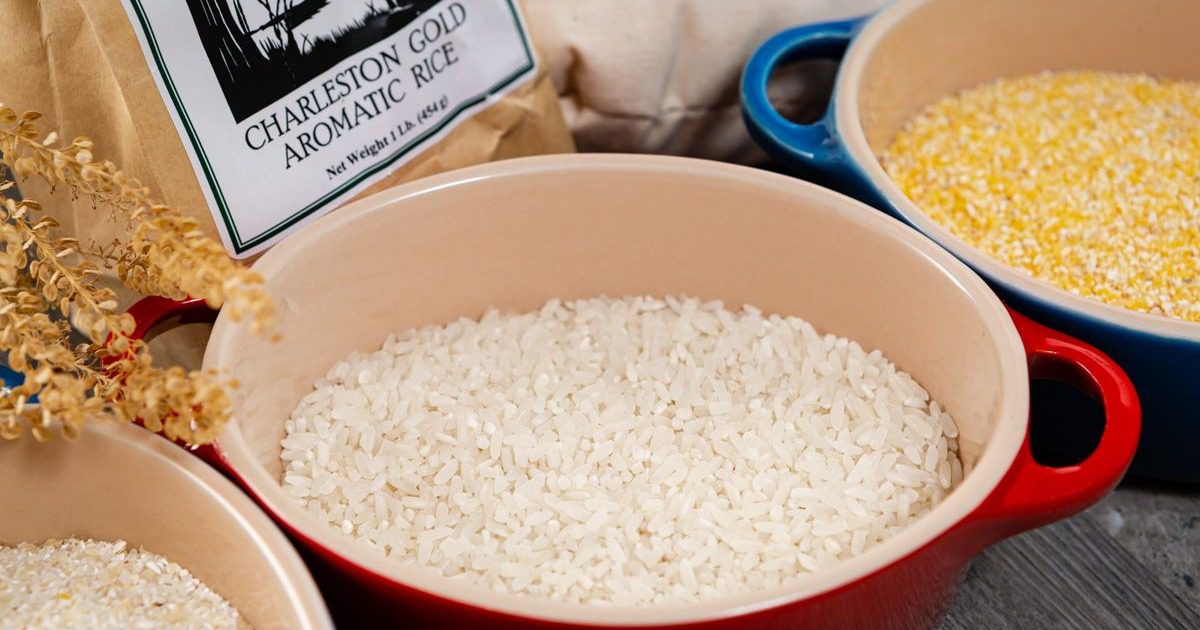
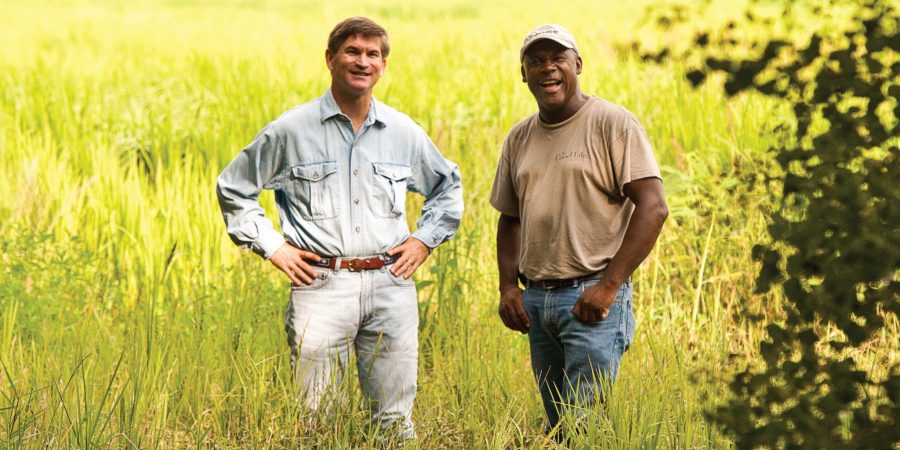
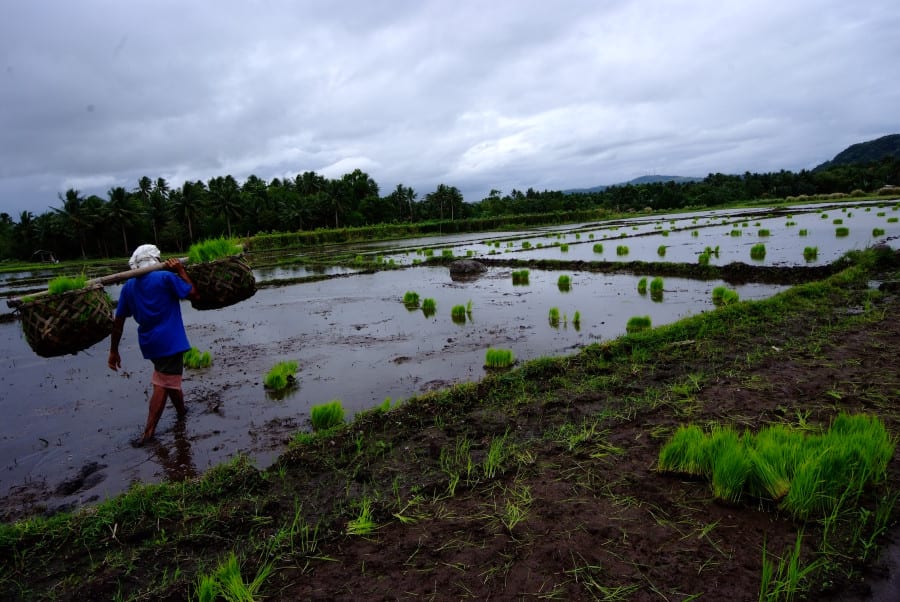
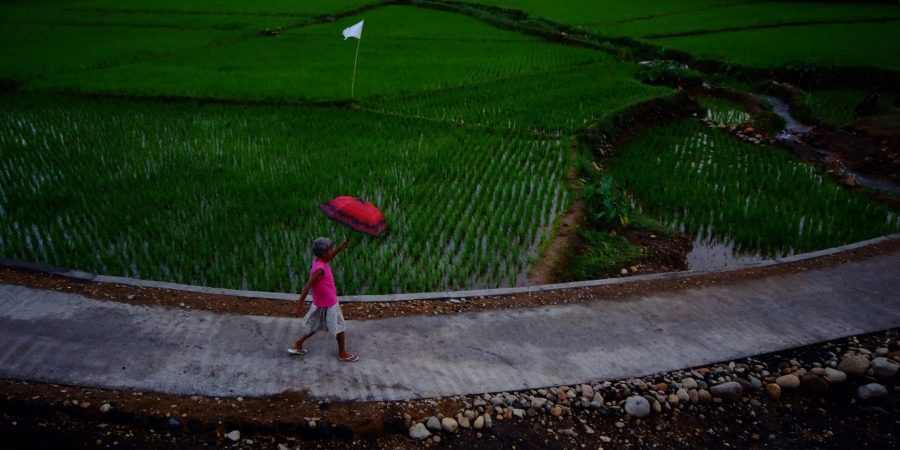
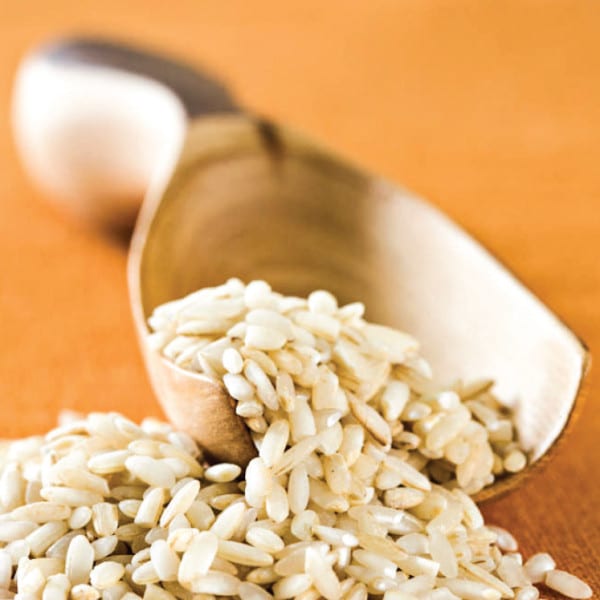
Comment 1
Is it possible for me to purchase the rice online? I’m a mom and grandmother who’s family is from Texas and I would love to taste your rice and try your recipes.